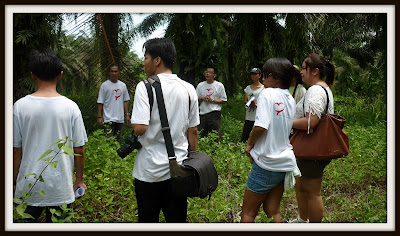Old Tobacca Factory
Towards the end of the 19th Century settled in the New Darvel Bay Tobacco Company in Lahad Datu. The Licensed by the North Borneo Chartered Company began business in a big way with tobacco farming.
HISTORY
Von Donop's primary task was to introduce the right type of crops for
Sabah. He decided to experiment with tobacco. Sanders, a tobacco
planter from Deli in Sumatra, was enlisted to explore the area
south of the Marudu Bay at Bandau, Bongon and Bengkoka River in order to
determine their suitability for the planting of tobacco.
The first experiment was carried out by Sanders in 1883 at the
Suanlamba River near Sandakan as a project of the China Sabah Land
Farming Company, a Chinese-European joint venture company that
was floated in Shanghai.
The company had acquired a land concession of 40,000 acres (16,000ha)
in 1882 to plant sugar cane, but decided to shift to tobacco after
sugar prices experienced a sharp decline. The experiment was a
success.
In 1884, the first bale of tobacco was dispatched to tobacco dealers
in London and Amsterdam where it made an impact as comparable in quality
to the Sumatran tobacco leaf, and was most suitable for the
cigar industry as wrapper-leaf.
The success of the first bale in London and Amsterdam, however, could
not save the China Sabah Company from going into liquidation as the
company was already in very bad shape before the success of its
tobacco came through. Nonetheless, a suitable crop in Sabah had been
discovered.
THE FALLING
Tobacco planting had given the North Borneo Company a new lease of
life. It stimulated the economy as a whole and led to an improvement in
the financial resources of the North Borneo Company. From a
company which was operating with losses since its inception in 1881, it
was able to generate sufficient income from 1890 onwards to
cover its expenditures. It was due to tobacco's contribution that the
company was able to pay its first dividends to its shareholders.
In 1890, tobacco exports accounted for about 30% of the state's total
exports, and this increased steadily to 50% in 1891 and 60% from 1892
onwards. As a consequence of the demand for labour by tobacco
estates, an influx of Chinese and later, Javanese immigrants to Sabah
changed the demography of the state.
The tobacco boom was short-lived. By 1892, tobacco estates were
beginning to experience difficulties. The rapid development of the crop
in South-East Asia had resulted in a shortage of skilled
planters and supporting staff. Being new to the industry, the companies
in Sabah had to rely on the ``rejects'' of the more established
companies in Deli, Sumatra. This had resulted in a decline in production
quality. But it was the economic depression of the early 1890s
which stalled the growth of the tobacco industry in Sabah.
As most of the companies were new, they were in constant need of
funds. The credit squeeze which came with the economic depression meant
that many companies simply could not go on. The problem was also
exacerbated in 1892 by the introduction of the McKinley tariff in the
United States. The United States, the chief importer of cigar
tobacco, decided to protect its homegrown tobacco industry. This
resulted in a sharp drop in demand for Sabah tobacco, and a
further drop in prices.
THE LAST REMAINING STANDING
The last company from the old days was the New Darvel Bay Tobacco
Plantation near Lahad Datu which wound up in 1930. After that, the
tobacco industry continued on a small scale with the Imperial
Tobacco Company taking over the New Darvel Bay Company's land in Segama
in 1934. The tobacco leaf of Sabah was still in demand well into
the 1930s as a wrapper-leaf. The Imperial Tobacco Company was revived
after the war, but finally closed in 1960.
 |
| Remaining of the Factory in 2011 |
Throughout this period of development of Western tobacco companies in
Sabah, the natives of the west coast maintained their cultivation of
the crop. Today, tobacco is still being traded and consumed as
in the olden days. The last few traces of the European tobacco industry
in Sabah can still be seen today through the wrapped cheroots
that are on sale in the markets or tamus, and a few old buildings which
were once used to process tobacco at the present Sabah
Agricultural Vocational Training Centre near Lahad Datu.
 |
| Roofing with hard woods |
 |
| Most of the concrete ruin but still see the hard woods standing strong |
 |
| Hard Wood |
The remaining concrete ...
 |
| The Team from SEGI Student, iLOVEldu, SEPA and press Reporter |
 |
| The eyes of the sunlight watching over the Factory |
 | ||
| Group of iLOVElahaddatu |
Vault Safe Deposite
NOT far from the old remaining Factory building... walking distances the only remaining Vault safe deposit during the tobacco golden era..
There use to be an office for the Tobacco Company around the Factory and here were all the Financial banks located and place were they paid the workers..
Build from concrete and last longer through the years, now located and surrounding by oil palm.
 |
| Strong Vault remain |
 |
| Remaining Vault Safe Deposite |
 |
| History recorded |
 |
| remaining of the Old Tobacco Factory in 2011 |
 |
| wild animal bones |
 |
| Pieces of flooring |
 |
| History check |












Comments